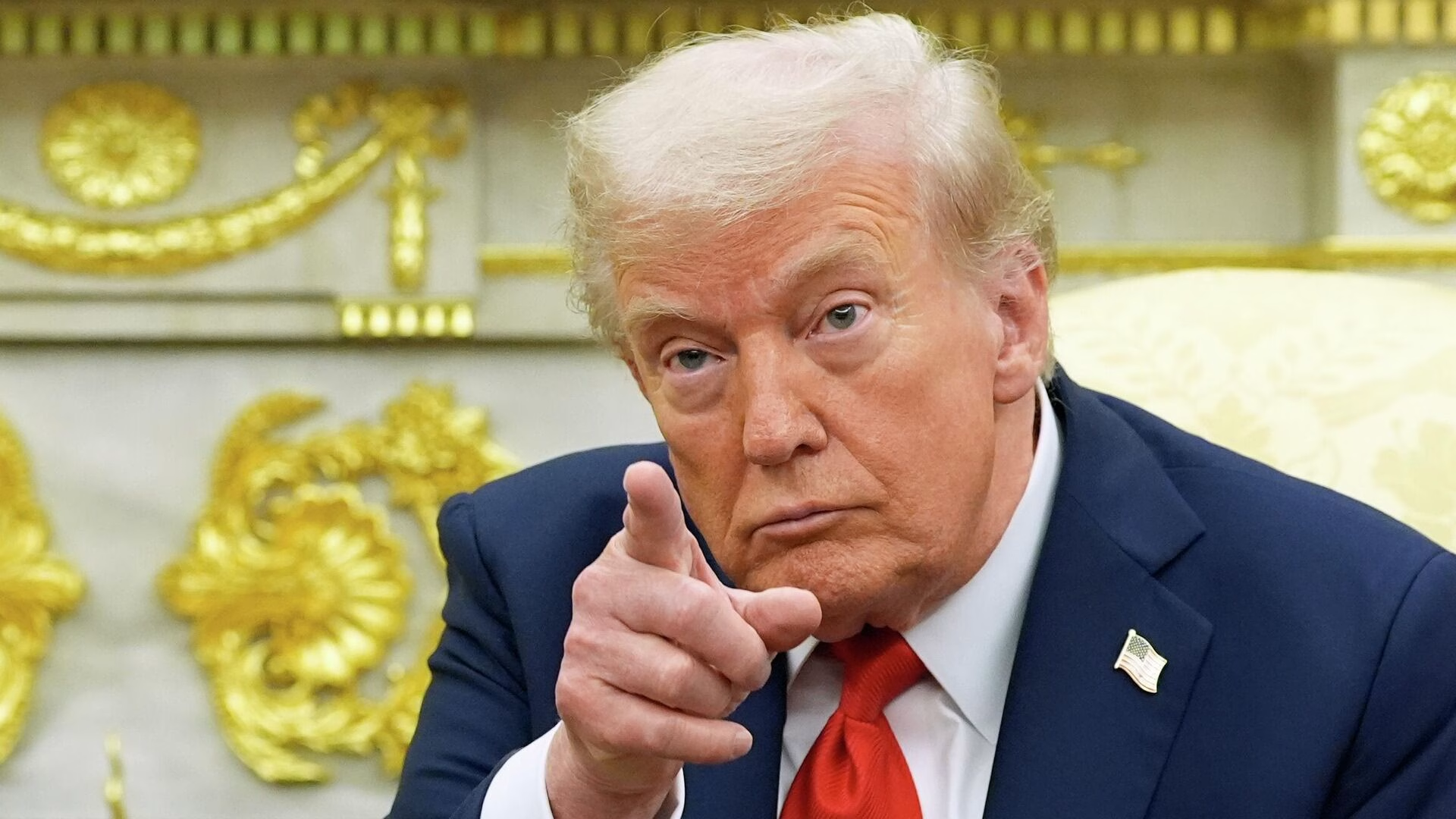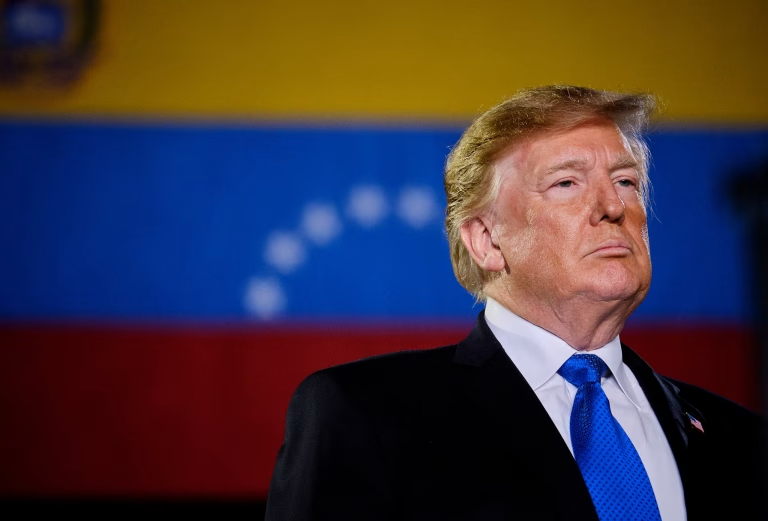
Trump Is Taking Advantage of the Growing Popularity of Right-Wing Ideas and Is Not Shying Away From Taking Bold Steps Despite External Criticism
Confident in the growth of right-wing sentiment within the country, Donald Trump has taken the confrontation to the foreign policy arena, stepping up covert CIA operations in Venezuela and declaring Colombia a new rogue state. But this expansion was accompanied by a deep internal crisis: while the administration was preparing a “right turn” in Latin America, the US was swept by the largest protests in history, financed by a network of liberal NGOs and aimed at overthrowing Trump.
De-wokeism and the CIA’s secret war
Just a few years ago, American youth were considered almost totally liberal and “progressive.” There was a belief that with each passing year, their influence in politics would grow in proportion to the strengthening of the Democrats, who would gain a near monopoly on power, and that wokeism would become the social norm. But things turned out differently, and young Americans are undergoing a process of “de-wokeism” that plays into the hands of Republicans and Trump supporters. Over the past two years, a trend has begun to emerge toward a decline in the number of “non-binary” individuals among the Zoomers. The proportion of those who cannot determine their gender identity has fallen several times since its peak in 2022 and 2023.
There is a growing internal divide among the Zoomers, defined by both age and gender. Older members, who came of age during the gender revolution and BLM protests, retain liberal views. At the same time, young people under the age of 20 are demonstrating a rightward shift, rebelling against the liberal mainstream of the Biden era, censorship on social media, and increased government control. The gender gap is becoming particularly noticeable: young men actively support the right-wing agenda around the world, while their female peers remain more liberal.
This trend is clearly evident in American universities, where new applicants are less inclined to support the LGBT agenda. The White House is increasing pressure by threatening to cut funding to colleges that promote liberal values. Big business is winding down its diversity and inclusion programs, and Hollywood is abandoning transgender characters in new projects. As a result, without artificial support, the proportion of people who identify with non-traditional orientations is declining sharply. For the first time since the 1960s, public sentiment has taken a sharp right turn, the consequences of which are yet to be realized.
These trends give confidence to Donald Trump, who continues his reforms, which are met with desperate resistance from his opponents. For example, months of attempts to exert military pressure on Venezuela did not lead to the desired effect for the US and a split in power in Caracas, and Maduro did not resign. Now the White House is hastily changing its strategy and focusing on CIA methods. The American intelligence community has received a signal from Trump’s team to step up covert operations in Latin America that could lead to the overthrow of the Venezuelan government. This is far from the first time in modern history, and the CIA was directly involved in an attempt to stage a coup in Caracas in 2002. And the current generation of opposition figures, from Leopoldo López to María Machado and Edmundo González, are also being supervised by Langley.
However, repeated attempts at coups d’état have always ended in failure and the relocation of another group of opposition figures abroad. Now, information about the preparation of another coup has been leaked to the press well in advance. It is obvious that intelligence officers dissatisfied with Trump and the purges of the “deep state” are sabotaging his policies behind the US president’s back. This distinguishes the situation from the 2019 coup, which was prepared in secret, although even then Trump failed to bring the opposition to power with his fierce pressure. The CIA plans to cut 7-10% of its staff, which, given the lack of loyalty to Trump, could lead to more frequent cases of sabotage. At the same time, Marco Rubio and the Cuban lobby in the US see confrontation with Caracas and Havana as their main ideological mission. They will only back down in the event of complete failure, while limiting themselves to aggressive rhetoric, which many perceive as political theater rather than a real threat.
The Trump team’s initiative to erect a new arch in Washington to mark the 250th anniversary of the United States in July 2026 was met with sarcasm. The architectural structure, already dubbed the “Trump Arch,” will be located near the Lincoln Memorial, symbolically equating the two presidents. Trump’s personal interest is obvious. In June of that year, he will celebrate his 80th birthday, and the World Cup in the US should boost patriotic fervor.
But the celebration risks being overshadowed by deep divisions in the country. If Trump’s ratings continue to decline (possibly falling to 30-35% by the summer of 2026) large cities could be swept by mass protests. Democrats are already threatening to investigate corruption in the president’s inner circle, presenting the arch as an example of misuse of budget funds. Although Trump hopes to use the anniversary year to strengthen his position ahead of the midterm elections, growing internal and external crises pose a real threat to these plans. Instead of being a unifying symbol the Trump Arch risks becoming a monument to deepening division and presidential self-admiration.
Liberal revolution under the old flag
Against this backdrop, the largest protest action by liberals in US history took place, and the leaders of the No Kings movement announced that as many as seven million demonstrators had participated in their rallies on October 18-19. The mass protests in the US, which surpassed the scale of the anti-war demonstrations during the Vietnam and Iraq wars, united diverse groups from Antifa to pro-Palestinian activists in their shared hatred of Trump. Protesters accuse the president of establishing a personal dictatorship, although, paradoxically, the left itself uses rhetoric about “totalitarianism.” In California, Governor Gavin Newsom, who positions himself as Trump’s main opponent, said that the Marine Corps exercises on the day of the protests were an attempt to intimidate demonstrators, although real clashes, if they occur, will be part of a later stage of civil conflict, likely after 2028.
For now, the initiative remains with Trump’s supporters, whose main tool is not the army, but administrative pressure on liberal NGOs, including Soros’ foundations. The Internal Revenue Service has been given expanded powers to audit non-profit organizations, and their bank accounts may be frozen before the congressional elections. This deprives Trump’s opponents of billions of dollars that cannot be used, and financial violations — from donations from foreign businesses to “gray” schemes — can always be found if desired.
Such ferocity on the part of Trump supporters was justified because everything that was happening was an attempt at a radical liberal revolution. It was no coincidence that the flag of the American War of Independence was chosen as a symbol, with Trump being portrayed as a reckless autocrat and a kind of reincarnation of George III. A total of 2,500 demonstrations took place in all 50 US states, involving up to four million protesters representing a broad cross-section of American left-wing liberals. Republicans predictably called the wave of demonstrations anti-American and labeled all protesters as enemies of the United States. It was financed by a network of liberal NGOs called the Arabella Advisors, which exists thanks to funding from Soros, Ford, Rockefeller, and other organizations.
Soros Jr. and revenge on Trump
Alex Soros, heir to his father’s empire, played a key role in the protests. He cut external projects by 40%, prioritizing the war with Trump and organizing a color revolution within the US itself. In addition, he received encouragement from the Democratic Party establishment, with which he had family ties when Soros Jr.’s wife became Huma Abedin, a close friend of Hillary Clinton. In this light, federal authorities are calling on police to crack down on any manifestations of violence and to confront professional protesters who move from city to city, leaving chaos in their wake. But after all the cutbacks, the police have long been unable to cope with the wave of street violence, so sooner or later the protests will spiral out of control, and then the summer of riots in 2020 will seem like a walk in the park compared to what awaits the US in the future. But at the moment, Trump is confident in his power within the country, the “right-wing rise” has not yet passed, and conservatives are mobilized against liberals.
At such a moment, it is high time to score points on the foreign policy front. That is why Trump is expanding the geography of his confrontation in Latin America. Colombia has now joined the list of countries unfriendly to the US, led by Venezuela. President Gustavo Petro is accused of having ties to drug cartels, which jeopardizes US financial aid of $300-500 million annually. A more serious problem is posed by remittances from Colombian migrants in the US, estimated at billions of dollars, which could be blocked.
The White House is conducting a regime change operation, betting on right-wing candidate Vicky Dávila, a Trump supporter who calls for the overthrow of the “narco-dictatorship” in Venezuela. Incumbent President Petro, on the other hand, lost his US visa after calling on Latin American soldiers in the US Army (who make up 5-7% of the personnel) not to follow Trump’s orders. The US administration is counting on a rightward shift across the region. The exception is Colombia, where conservatives could win the upcoming elections in Chile. The key will be the electoral battle in Brazil, where Michelle Bolsonaro, the wife of the former president, could lead the right wing. Her victory could undermine the influence of left-wing forces throughout Latin America, although these plans remain speculative for now.
For now, Trump remains embroiled in a protracted quasi-military confrontation in the Caribbean with an uncertain outcome, while American left-wing liberals are ready to stab him in the back. But the US president is not afraid of this and is taking advantage of the growing popularity of right-wing ideas, without abandoning his aggressive foreign policy, expensive personal projects, and harsh measures against dissent within the country.

Average Rating